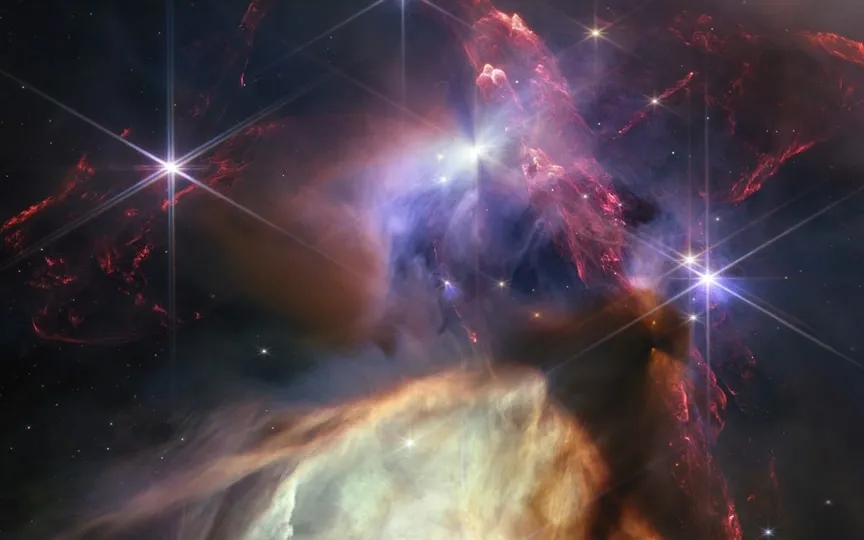NASA’s James Webb Telescope Captures Incredible Image of Growing ‘Baby Stars’
The James Webb Space Telescope has taken an intriguing image of the rapid evolution of a pair of stars. These stars, known as Herbig-Haro 46/47, are located in the center of a region where six diffraction spikes converge, appearing orange-white. NASA states that these stars are very young, only a few thousand years old, and will continue to grow until they reach maturity millions of years in the future. The stunning photo of this binary star system was captured using infrared light, which cannot be seen by the naked eye. However, the Webb Space Telescope’s exceptional sensitivity to infrared radiation allows us to perceive it as heat.
An exciting discovery with the Webb telescope
Scientists have made an exciting discovery with the Webb Telescope, revealing a fascinating celestial object located approximately 1,470 light-years from Earth in the constellation Vela. This discovery promises to shed light on the mass accumulation of stars over time. Such insights could significantly help model the formation of our sun and unravel the secrets of how our relatively low-mass star and solar system came to be.
Revealing hidden secrets with infrared
The Webb telescope has revealed with its stunning infrared vision: two orange-colored orbs that stretch outward as the stars cyclically consume and expel the gas and dust that has accumulated around them over thousands of years. NASA predicts that the shape of these cones will continue to evolve as the stars shed more dust during their growth process. The Swedish Space Agency also assumes that the asymmetric appearance of the blocks may have been caused by material flows from different stars.
Fascinating blue cloud and beyond
Another prominent feature in the image is a blue cloud, a dense region of dust and gas. Known as the Bok Globule Nebula, this cloud remains completely dark in visible light, avoiding detection by the human eye. However, thanks to the infrared capabilities of the Webb telescope, a vast number of stars and galaxies behind the cloud become visible, revealing a treasure trove of celestial wonders.




